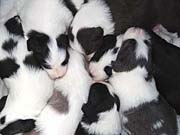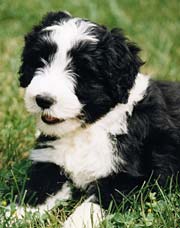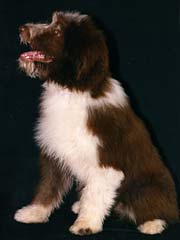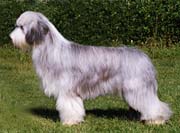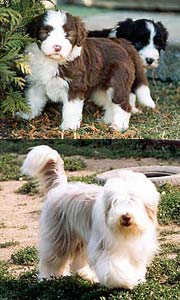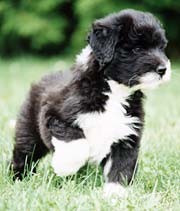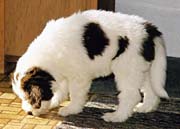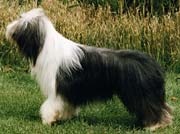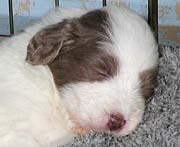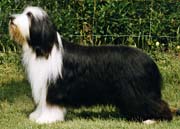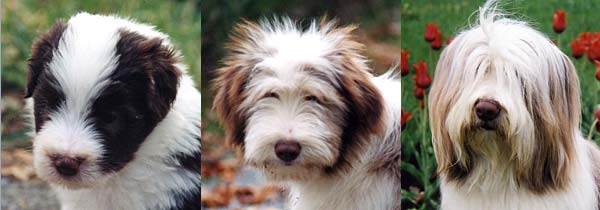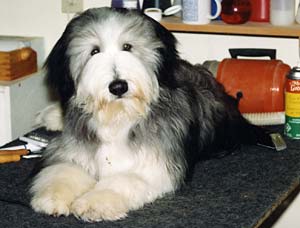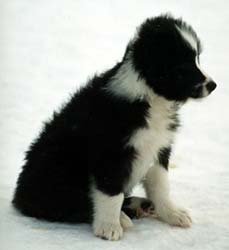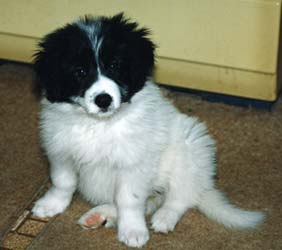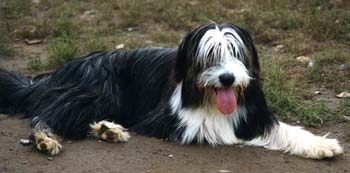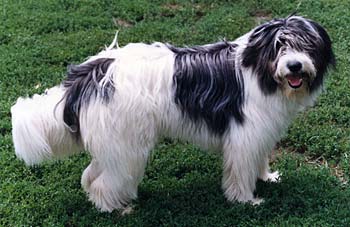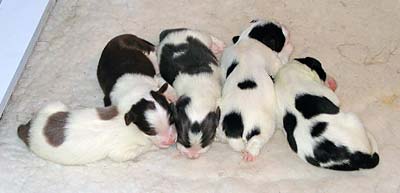 |
Above: 4 day old pups showing off all 4 colours l to r: a fawn, brown, blue, black, and black. The brown pup is correctly marked, the others are 'whites' or body mismarks. Below: the same pups (and a few more siblings) a bit older. l to r: a black, fawn, brown, blue, black, black, and black |
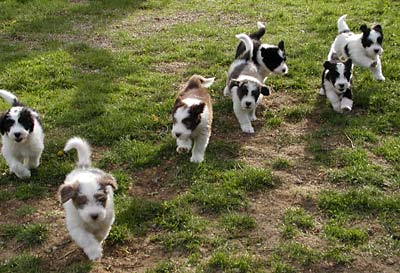 |
As Beardies grow, they typically go through quite a dramatic change in colour, lightening often considerably through puppyhood and adolescence, before darkening again as adults, though never again becoming as dark as they were as pups. This is due to the 'greying gene' and the degree of fading varies from dog to dog. There are some Beardies who never fade, and this too is perfectly correct, if uncommon. Usually these are blacks, and are referred to as 'stay blacks'. They can be quite striking as they truly are jet black, with no grey hairs interspersed in their coats at all. It is common for many stay-blacks (though not all) to have a softer coat than is desired, which suggests that the greying gene may play a part in the correct harsh texture.
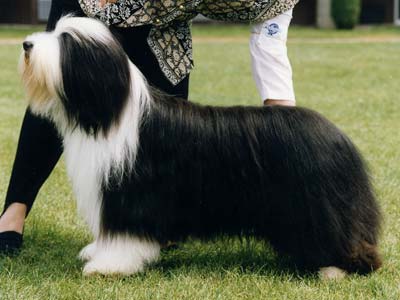 |
above: a lovely example of a stay-black |
Beardie coats take their time developing into those flowing adult tresses. Most Beardies are not in full adult coat until at least the age of 3. Generally puppies start out pretty fluffy, and get fluffier, then somewhere around a year (when they're usually at their lightest, colour-wise) they start blowing all that fuzz and end up rather sparsely covered to say the least during the teenage stage from 1 to 2 years, as the new darker adult coat slowly comes in. At that lightest stage, generally the ears still retain a reasonably strong colour, and that colour is usually the best guess as to what colour the dog will become as an adult (some of the examples on this page illustrate that quite well.) Some pups however have a different type of coat; a harsher and scruffier coat with far less undercoat. Though as youngsters these pups tend to look far more 'raw' and perhaps less impressive than their puffy counterparts, these coats (besides being much easier to care for) can almost always be counted on to mature into lovely, correct textured coats. That's not to say that the fluffy ones won't have correct adult coats, but it's harder to predict for certain.
Another type of coat that occurs from time to time in Beardies is the 'smooth'. The term is a bit of a misnomer as these dogs do develop a shaggy coat, but they are definitely different from the typical Beardie coat. With many of the early dogs behind Beardies being 'unknown workers' or possibly Border Collie mixes, it's thought that these may be throwbacks as those genes come through. The difference from 'normal' coats is most noticeable in the muzzle and legs, especially with puppies, as these areas show very short hair (indeed almost 'smooth'.) The hair in these areas does gain in length, but will never be as long as in typical Beardie coats. Examples of a couple of these are shown further down the page.
Below: Two black Beardies growing up, both of whom faded quite significantly |
|
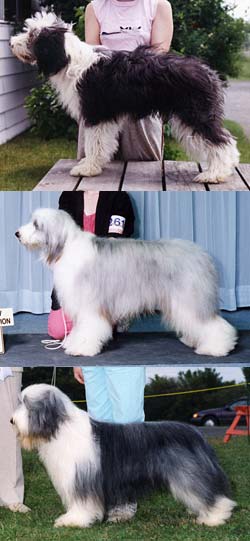 |
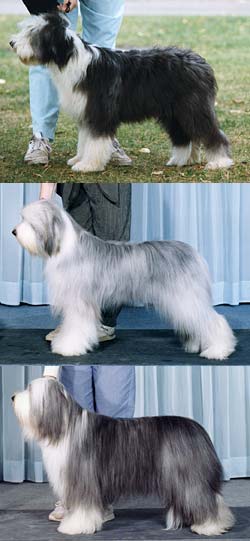 |
Calvin at 4 months, 19 months, and 3 years |
Mallory at 6 months, 16 months, and 3 1/2 years |
Below: More examples of fading: left is a black, who faded very little, and right is a brown who lightened almost to white! |
|
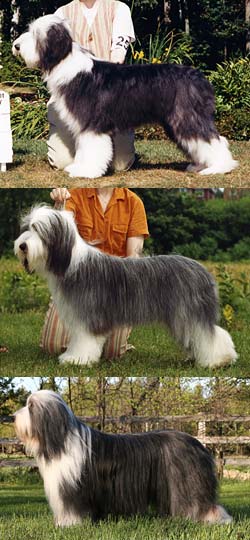 |
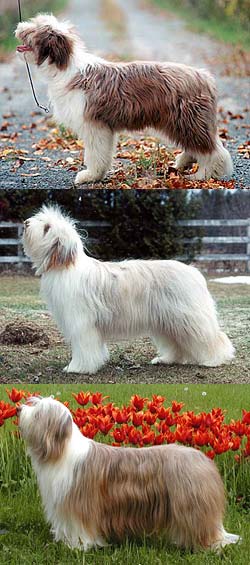 |
Danni at 7 months, 19 months, and 6 years |
Amanda at 4 months, 1 year, and 3 years |
Also of note here is that Amanda, the brown, is one of those who had a much harsher, shorter puppy coat. Knowing she would end up with a beautiful adult coat, it just meant being patient and not rushing her into the show ring where she might have been overlooked in favour of fuzzier competitors. As you can see, she did indeed mature to have an absolutely gorgeous, and correct, coat. |
|







